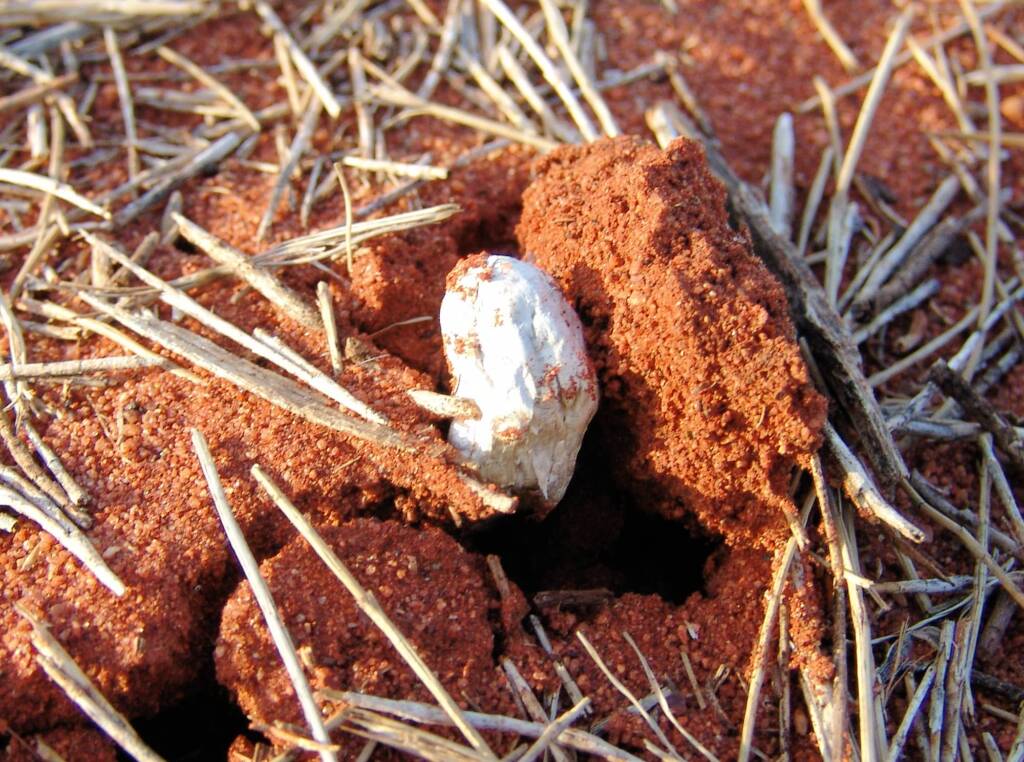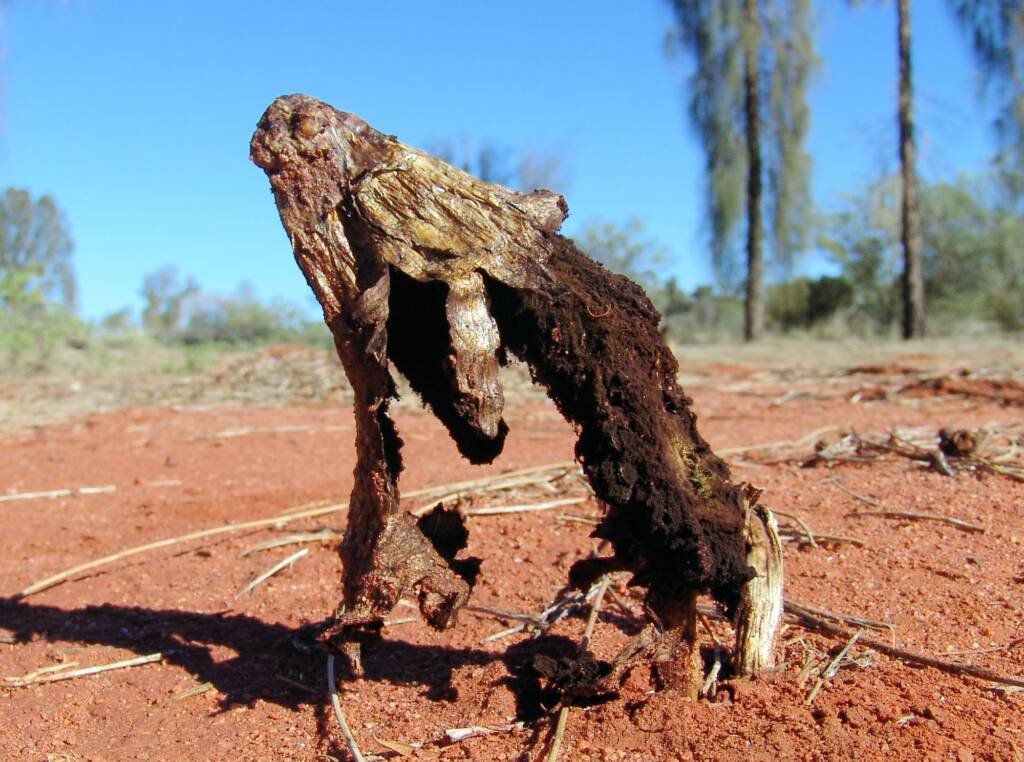The Podaxis pistillaris has a distinctive appearance, and is a fungus commonly found in the deserts and arid regions of Australia, as well as other countries. Known under a variety of common names, in Australia the Podaxis pistillaris is also referred to as the False Shaggy Mane, Desert Shaggy Mane, Stalked Puffball1, Black Powderpuff, False Inkycap and Desert Inkycap.
Often thought of as a ‘stalked puffball’, this fungus, known Podaxis pistillaris is not closely related to the ‘puffballs’.1 The Podaxis pistillaris is not to be confused with Coprinus Comatus (Shaggy Mane), as it lacks gills and has an dense thick woody stem.

The False Shaggy Mane can be found growing up to 15 cm high, made up of a woody stem (about 2-5 cm) and large, long shaped cap, that protects the blackish tissue, bearing the spores.
The cap varies in colour from white to yellow-brown or tan colour. The outer skin typically breaks into a ‘shaggy’ fibrils that fall away allowing the spores to be dispersed by the breeze and wind.
The fungus was used by many desert Aborigines for decorative purposes, with the spores brushed onto the body. It was used by many desert tribes to darken the white hair in the old men’s whiskers1. As well, children would use it in play, from body painting, to sometimes drawing patterns or pictures on hard ground, or to imitate ritual leg slashing carried out by adults during mortuary ceremonies2.
The northern Warlpiri tribe are reputed to use the spores from the fungus as a fly repellent.2
Common Name
Stalked Puffball, False Shaggy Mane, Black Powderpuff, Desert Shaggy Mane, Black Powderpuff, False Inkycap and Desert Inkycap.
| WARNING Extreme care must be taken when identifying edible food plants and those used in bush medicine. Some bush foods are only edible at different stages of the plant cycle, or when treated appropriately. Bush medicine should only be used under the guidance of a qualified physician. Information here is only provided for research. You should always seek experts in the field to confirm the identification of the plant and whether they are edible or appropriate. |








- Scientific classification
- Kingdom: Fungi
- Division: Basidiomycota
- Class: Agaricomycetes
- Order: Agaricales
- Family: Agaricaceae
- Genus: Podaxis
- Species: P. pistillaris
- Binomial name: Podaxis pistillaris
Footnote & References
- ANBG / Australian Fungi, Aboriginal use of fungi, Retrieved January 14, 2008
- Peter Latz, Bushfires and Bushtucker Aboriginal Plant Use in Central Australia, IAD Press, Alice Springs, 2004, p248
- Royal Botanic Gardens Melbourne, Mycology, Retrieved January 16, 2021
- The Taxoniomicon, Taxon: Genus Podaxis, Retrieved January 14, 2008
- Medicinal Mushrooms, Podaxis pistillaris, Retrieved January 14, 2008
